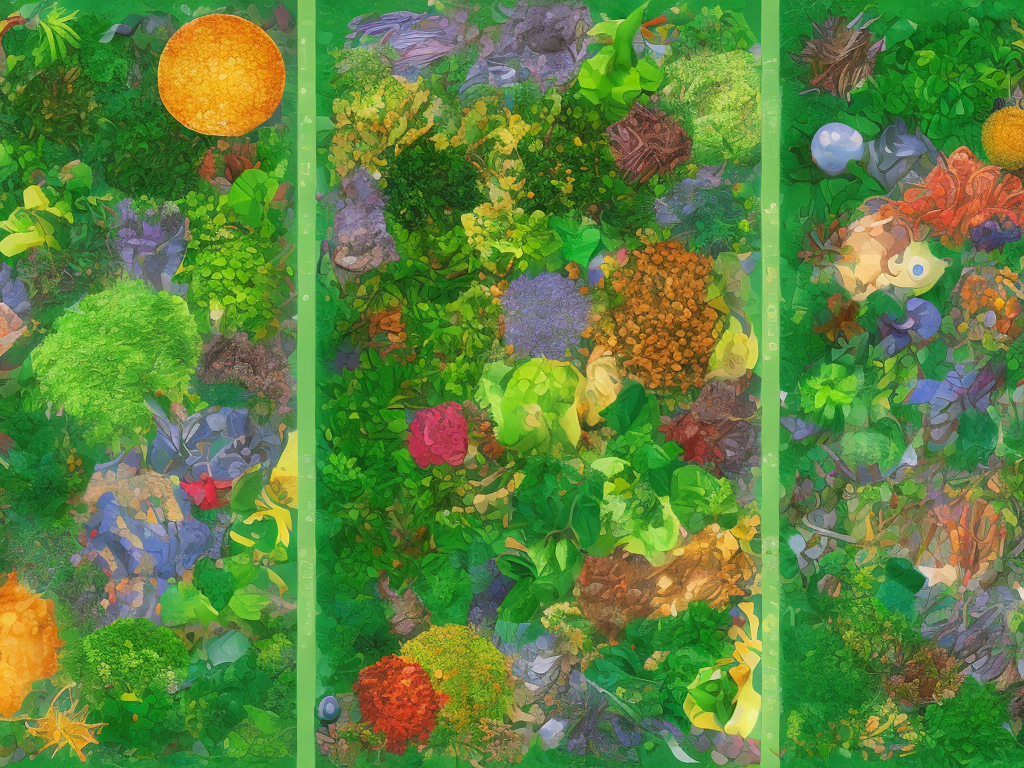
The world is teeming with diverse organisms, ranging from microscopic bacteria to massive blue whales. These organisms are made up of cells, which are the building blocks of life. While all living organisms are composed of cells, there are two main categories: animal cells and plant cells. Although they share some similarities, there are fundamental differences in their structure and function. This article aims to provide a comprehensive understanding of the differences between animal and plant cells.
To begin with, let us delve into the structures of both types of cells. Animal cells are usually round or irregularly shaped and lack a rigid cell wall. On the other hand, plant cells have a fixed rectangular shape and are surrounded by a rigid cell wall composed of cellulose. This key distinction allows plant cells to maintain their shape and provide support to the entire plant.
Additionally, plant cells contain various specialized organelles that are unique to them. One crucial organelle is the chloroplast, which is responsible for photosynthesis. Chloroplasts contain a green pigment called chlorophyll, which absorbs sunlight and converts it into chemical energy. In contrast, animal cells lack chloroplasts and are unable to produce their own energy through photosynthesis. Instead, animal cells rely on other organelles such as mitochondria to generate energy through respiration.
Another significant difference between animal and plant cells lies in the presence of certain organelles. Plant cells possess a large central vacuole, whereas animal cells usually contain several small vacuoles, if any. Vacuoles are membrane-bound sacs filled with fluid that perform various functions. In plants, the central vacuole primarily stores water, nutrients, and waste materials, while also providing support to the cell. In animal cells, vacuoles are smaller and play a role in intracellular digestion and waste management.
Furthermore, animal cells are known for their mobility. They have specialized structures called centrioles that aid in cell division. Centrioles are not present in plant cells and are believed to play a role in the formation of the spindle fibers that separate chromosomes during cell division. This absence of centrioles in plant cells is compensated by the presence of microtubule organizing centers, which perform similar functions.
Moving on to the genetic material, animal and plant cells house their DNA differently. Animal cells contain multiple linear chromosomes, which are tightly packed inside a membrane-bound nucleus. In contrast, plant cells contain a large central nucleus that stores the genetic material, which is organized into multiple linear chromosomes. However, plant cells have an added layer of complexity in their genetic material. They also have unique structures called plastids, which include chloroplasts, chromoplasts, and amyloplasts. These plastids have their own DNA and play various roles in plant cell functioning.
Moreover, the process of cell division also varies between animal and plant cells. Animal cells undergo a process called mitosis, which results in the formation of two genetically identical daughter cells. In mitosis, the chromosomes align at the cell's center and separate into two identical sets. Conversely, plant cells go through both mitosis and cytokinesis, which are distinct processes. In cytokinesis, a cell plate forms at the equator of the cell and gradually develops into a cell wall, leading to the formation of two daughter cells.
Aside from structural differences, animal and plant cells also differ in their functions and abilities. One significant distinction is how they obtain nutrition. Plant cells have the remarkable ability to produce their own food through photosynthesis, as they possess chloroplasts. They can convert sunlight, water, and carbon dioxide into glucose and oxygen. In contrast, animal cells cannot produce their own food and rely on eating other organisms for their nutrition.
Additionally, plant cells have the capacity for growth throughout their lifespan. They can continually form new cells and expand in size due to their ability to undergo cell division. In contrast, animal cells have a limited ability to regenerate and grow. While some animal cells can divide and regenerate, most have a specific lifespan and cannot replicate indefinitely.
In conclusion, animal and plant cells have crucial differences in their structure, organelles, genetic material, and functions. Animal cells are round or irregularly shaped, lack a rigid cell wall, and possess multiple small vacuoles. They have centrioles to aid in cell division and rely on respiration to generate energy. Plant cells, on the other hand, are rectangular in shape, have a rigid cell wall, and contain a large central vacuole. They have specialized organelles such as chloroplasts for photosynthesis and can undergo both mitosis and cytokinesis. Furthermore, plant cells produce their own food through photosynthesis and have the ability to grow continuously. Understanding these differences is essential for comprehending the diversity and complexity of living organisms on our planet.
 Self-Instruct
Self-Instruct